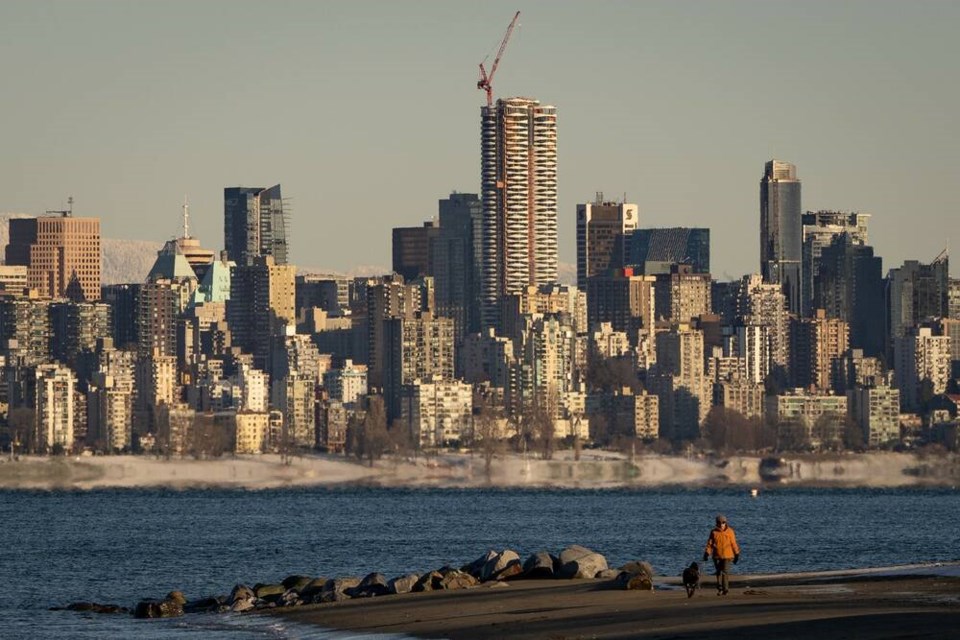A new BC Stats report — Sustaining Growth: Population and Demography for B.C. and Canada — says British Columbia’s population is projected to reach 7.9 million by 2046, up 44% from 2023.
A population bump of 2.4 million in 22 years in B.C. will almost certainly include some kind of serious increase in the K-12 population.
That, in turn, will require some big-picture planning by the alphabet soup of organizations that advise and administer public education in B.C.
And that planning needs to begin now.
Whatever the next 20-plus years holds for B.C.’s public education system, one thing is certain — the system is going to need more, much more, of everything, including properly qualified teachers, additional classrooms and the kind of teacher training that deals with some of the consequences of teacher shortages.
In B.C., there are currently 60 public school districts that operate approximately 1,600 public schools serving just under 600,000 students from K to 12.
Keeping track of both increases and declines in the province’s or even a school district’s population, especially in a time of growth, is a kind of black art.
Each region offers its own set of professional, economic, recreational and lifestyle conditions, and families tend to move both into and around the province according to their own needs and wants.
“We know that the record numbers of newcomers moving to B.C each year means we need more teaching staff in schools,” Education Minister Rachna Singh said in a recent government news release. “We’re actively working with our education partners on K-12 workforce initiatives to support the recruitment and retention of more certified teachers and build a sustainable education workforce for years to come.”
A provincial hiring incentive brought 50 new certified teachers to rural and remote schools in 2023 and is on track to hire almost 60 more teachers for the current school year, the province says.
The province says it expects approximately 1,700 international teacher applications in 2024, an increase of 145% since 2021. Applicants must apply and provide supporting documentation to both the Teacher Qualification Service and the Teacher Regulation Branch.
Since 2018, the provincial government has also added more than 400 new seats in teacher education programs, it says.
But even that may not be enough.
According to numbers released by the British Columbia Teachers’ Federation, 20,000 new teachers and 7,000 teachers’ assistants will be needed over the next 10 years to keep up with predicted population growth.
That may sound like a kind of “blue sky” number, but take into account that the average age of teachers in B.C. is 44.4, meaning that a large group of teachers have been teaching for 22 years or so and are within 15 to 20 years of retirement.
Several factors, including B.C.’s spiralling cost of housing and early retirements during the pandemic, have led to a continued shortfall in qualified teachers across the province.
School districts across British Columbia are increasingly recruiting uncertified teachers, according to provincial data, as educators report ongoing staffing shortages.
But there is more to the story. A shortage of properly qualified teachers creates a situation that sometimes requires teachers to teach outside the field of their training and expertise.
In most jurisdictions across Canada and certainly in the B.C. system of teacher training and assignment, elementary school teachers are considered “generalists” whose preparation includes a broad course background in order to teach a variety of subjects across the grade and age ranges for which they are experienced.
If an elementary school experiences a sudden increase in population, it may be necessary to assign an experienced Grade 5 teacher to a Grade 3 classroom, depending on where the “grade bubble” is. That’s can be done, but it’s not ideal.
Meanwhile, secondary school teachers are considered subject “specialists,” having completed a major or minor in one or two teachable areas during their undergraduate degrees.
Depending on the size of a secondary school and the distribution of its teachers with subject-related qualifications, it’s sometimes necessary to assign a teacher of senior English to cover a grade 8 math class until a math specialist teacher can be found.
This is an issue that may have important implications for the quality of teaching and learning at all levels.
If ever there was a time for representatives from the Ministry of Education, the B.C. Teachers’ Federation, the BC School Trustees Association and the BC School Superintendents Association, the BC Confederation of Parent Advisory Councils and the BC Principals’ and Vice Principals’ Association to sit at the same table and identify strategies to deal with their looming common problems, this is the time.
Geoff Johnson is a former superintendent of schools.
>>> To comment on this article, write a letter to the editor: [email protected]




